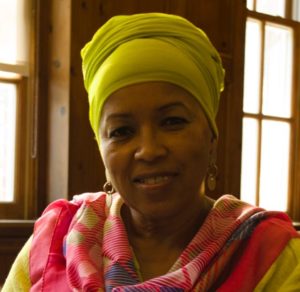student identity
Select an item by clicking its checkbox
No better time to teach how Islam is “raced” than now. Comments by the likes of Donald Trump provide excellent fodder for discussions about race, religion, and racism. It is also true that the kinds of questions asked by journalists and the stories they tell reveal the nature of anti-Muslim ...

Mere and Easy: Collage as a Critical Practice in Pedagogy
Date Reviewed: June 27, 2017
Author Jorge Lucero uses the term collage as a descriptor of a particular art form and also as a metaphor for juxtaposed ideas and themes in his edited collection of articles. Assessing collage compositions in general as stale and conventional, Lucero asks what would make collage a challenging and invigorating form for pedagogy and scholarship and attempts to model one way in his collection of essays.
Collage is a form that uses what one can access in printed images, photographic images, and digital images. One can assemble collages online or by using any of a multiplicity of surfaces and means of attachment. Lucero describes the collage-making process as deceptively easy and seemingly simple. Yet these qualities of “mereness and ease” (6) can enable two seemingly non-related images to create transformative possibilities of a third thing that was hitherto non-existent but is engendered by the creative or cognitive dissonance of a juxtaposition that is non-linear and non-complementary.
This edited volume on collage includes a variety of practical and theoretical papers that become an intentional collage of ideas. Lucero describes his choice and arrangement of disparate paper topics as a way to make this volume “a collage in and of itself” (7). This reviewer found it difficult to resonate or discover meaning in the choice and sequence of articles. Nonetheless, Lucero’s attempt to create a collage of scholarship intended to inspire readers to create a “new sort of some thing” (7) is unique and thrilling.
Among the gems in this book is the chapter by Grauer who conceives of teenagers’ bedrooms as collages illustrating their evolving identity. Describing a bedroom as a canvas on which can be displayed a young person’s “unique artifacts and symbols” (25), Grauer highlights the importance of paying attention to how teens’ rooms offer images to reflect upon, experiment with, explore, and create one’s own identity.
Guyas and Keys relate how an art installation of written scholarly work displayed in a public interactive space can be fertile ground for personal and professional growth. The content and process of the author’s dissertations were displayed in a gallery by hanging individual pages from the ceiling. Art work by the authors was placed on the walls alongside narrative interpretations of the process of art-making. Gallery visitors were asked to record responses or thoughts that occurred as they looked at juxtaposed materials and post their responses on the walls. “The gallery merged from an exhibition/installation into an open studio as visitors added to the evolving collage” (32).
Lucero includes a qualitative study by Stevenson and Duncum of early childhood development. Observing children drawing and then recording the children’s verbal reflections on their collage, the researchers concluded that abstract symbolization through images develops as early as age three. Engaging the children in reflective dialogue is noted as one way to aid three to five year olds in the development of symbolic representations and understanding.
Among the articles included in this compendium are a reflection on Freudian analysis of symbol use in the Little Hans case, an examination of the metaphorical cloning of images, and a verbal collage whose narrative and dialogue overlap but are not clearly related.
Lucero’s collection stretches the reader creatively and uncomfortably to find non-linear and unique connections between disparate articles. Its most useful audience is art educators and art students, although other educators will find several selections to be intriguing and useful in non-art fields.
Lack of awareness about what Islam is and how its followers are religiously motivated to act, coupled with heightened tensions during the 2016 presidential campaign about the patriotism of American Muslims, led me to offer “Arabs and Muslims in the Media” as a first-time offering this semester. The twenty-one students who ...
In my last blog, I reflected on my regret about the way that my classroom had become politicized in an election season in ways that I came to regret. Unexpectedly, I find myself once again politicizing my classroom; towards different ends this time. This time my act of radicalization is ...
This blog builds on Caleb Elfenbein’s excellent post in this series “Scaffolding Theory at the Introductory Level.” I want to think about two interconnected issues in relation to engaging theoretical discussions in the study of Religion and the Humanities in an introductory course on Islam: 1) cultivating a practice of ...



